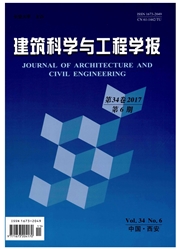

 中文摘要:
中文摘要:
针对各国结构远程协同试验研究的现状,通过调查研究,总结了几个极具代表性的研究成果,介绍了其各自用于远程协同拟动力试验的网络结构、数据通信模式及测试活动,分析了各个试验系统的异同点。结果表明:结构远程协同试验作为一种新型的结构试验系统和方法,具有资源共享、协同工作等优点,用其进行结构试验具有很强的可行性和有效性;中国自行开发的用于远程协同试验的NetSLab系统相比其他同类系统而言,在网络结构、通信模式上都具有一定的先进性。最后,结合中国目前的研究水平和网络现状提出了一些建议和设想。
 英文摘要:
英文摘要:
In view of structural remote collaborative experiments, several representative research results were summarized by investigating the recent advances in this research field. The network structure, the data communication pattern and the testing activities in these researches were presented in detail. The similarities and differences in each experiment system were analyzed. The results show that as a new type of structural experiment system and method, the remote collaborative experiment has some good points, such as resources sharing, collaborative work, etc. This system has strong feasibility and validity; the system (NetSLab) that voluntarily developed in China is more advanced comparing with other similar systems. In the end, some proposals and ideas on remote collaborative pseudo dynamic testing were put forward based on the level of the research and network situation in China.
 同期刊论文项目
同期刊论文项目
 同项目期刊论文
同项目期刊论文
 期刊信息
期刊信息
